The trails through Windsor Heights and western Des Moines have provided source material for dozens of Iowa wildflower Wednesday posts since 2012. Instead of featuring one species this week, I want to highlight how quickly some of my favorite wildflower-spotting grounds rebounded after North Walnut Creek and Walnut Creek flooded early this summer.
I took most of the enclosed pictures on either August 4 or August 18, about five to seven weeks after these areas had been underwater for several days.
Many neighborhoods in the Des Moines area experienced record flooding on the night of June 29 and morning of June 30. The Des Moines Register’s photo gallery provides a sense of the devastation. The fifteenth image in that series shows water covering almost the entirety of Colby Park in Windsor Heights.
The city of Windsor Heights gave me permission to publish these photographs taken by staff on July 1. Most of the wildflowers in Colby Park grow in a large prairie planting next to the trail, which is closer to Walnut Creek than the playground and parking lot visible here.
Five weeks later, the prairie patch looked surprisingly healthy, if a bit battered. The creek was behind me, and you can see the playground behind the wildflowers.
You’d never guess what these blue vervain plants had been through.
A few monkey flowers were blooming.
The brown-eyed Susans were coming on strong.
Yellow or gray-headed coneflowers surrounded an obedient plant.
Less than a half-mile down the trail, near the border between Des Moines and Windsor Heights, you could see how far Walnut Creek had flowed outside its banks weeks earlier. Sandy soil left behind still covered the ground. But common evening primrose plants were beginning to flower.
Hedge bindweed vines were thriving.
Many plants knocked sideways by the floodwaters continued to lie that way, as offshoots from the main stem grew upwards. Here’s an American bellflower plant:
A closer look at the flowers:
Partridge pea is a hardy plant.
Like the American bellflower, the main stem of this tall blue lettuce plant had been knocked over. Nevertheless, the flowers looked perfect.
A closer look at the flowers.
White vervain was starting to bloom as well.
When I came back to this stretch of riverbank two weeks later, the hedge bindweed was still abundant.
These cutleaf or green-headed coneflowers were much shorter than the ones I usually find. The flowers looked like they had seen better days.
I didn’t know what to make of this plant. The flowers resembled biennial gaura, but the leaves weren’t a match. When I showed the picture to John Pearson of the Iowa Department of Natural Resources, he speculated that this is “a garden escape such as white gaura (G. lindhermeri).” Several private yards extend close to this portion of the Walnut Creek trail.
White snakeroot was blooming in a shady patch nearby.
Some kind of goldenrod was in full flower.
Finally, here’s a picture I took in mid-August about a mile and a half north of Colby Park, near the border between Windsor Heights and Urbandale. These ox-eye plants were growing sideways in the prairie patch behind the Iowa Department of Natural Resources building on Hickman Road.

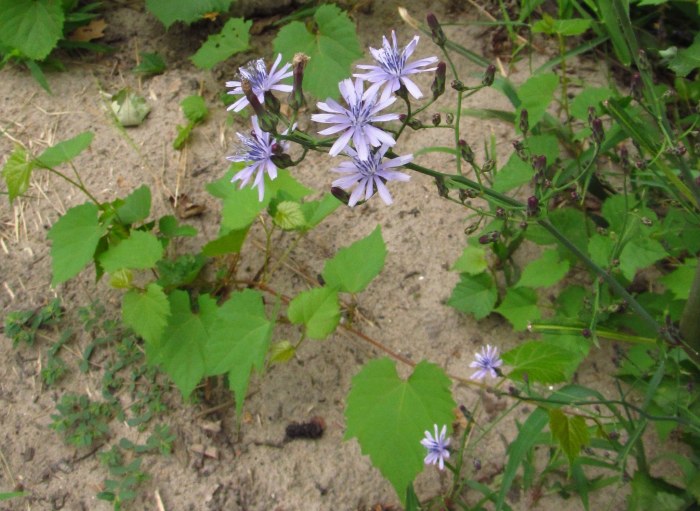
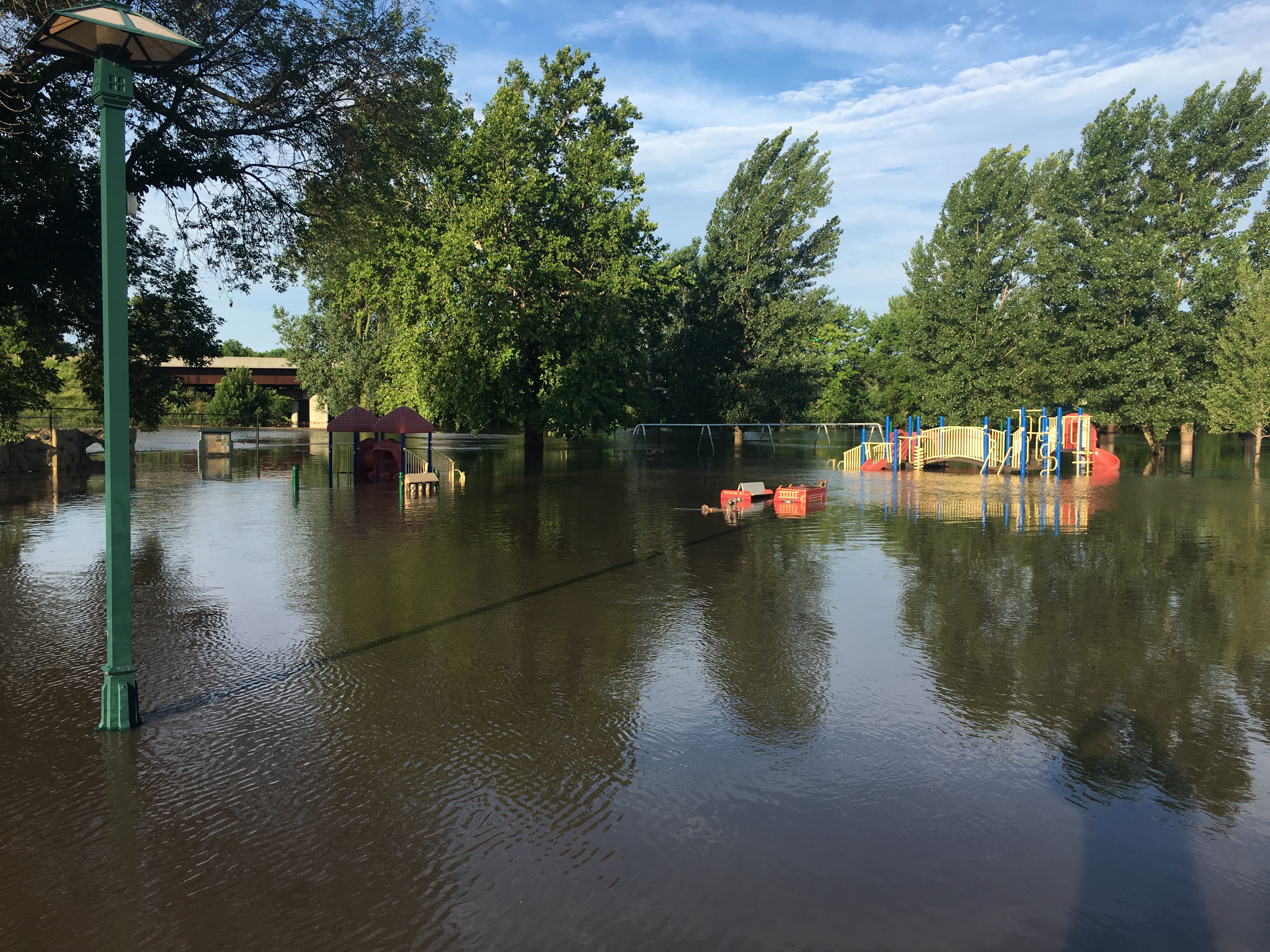
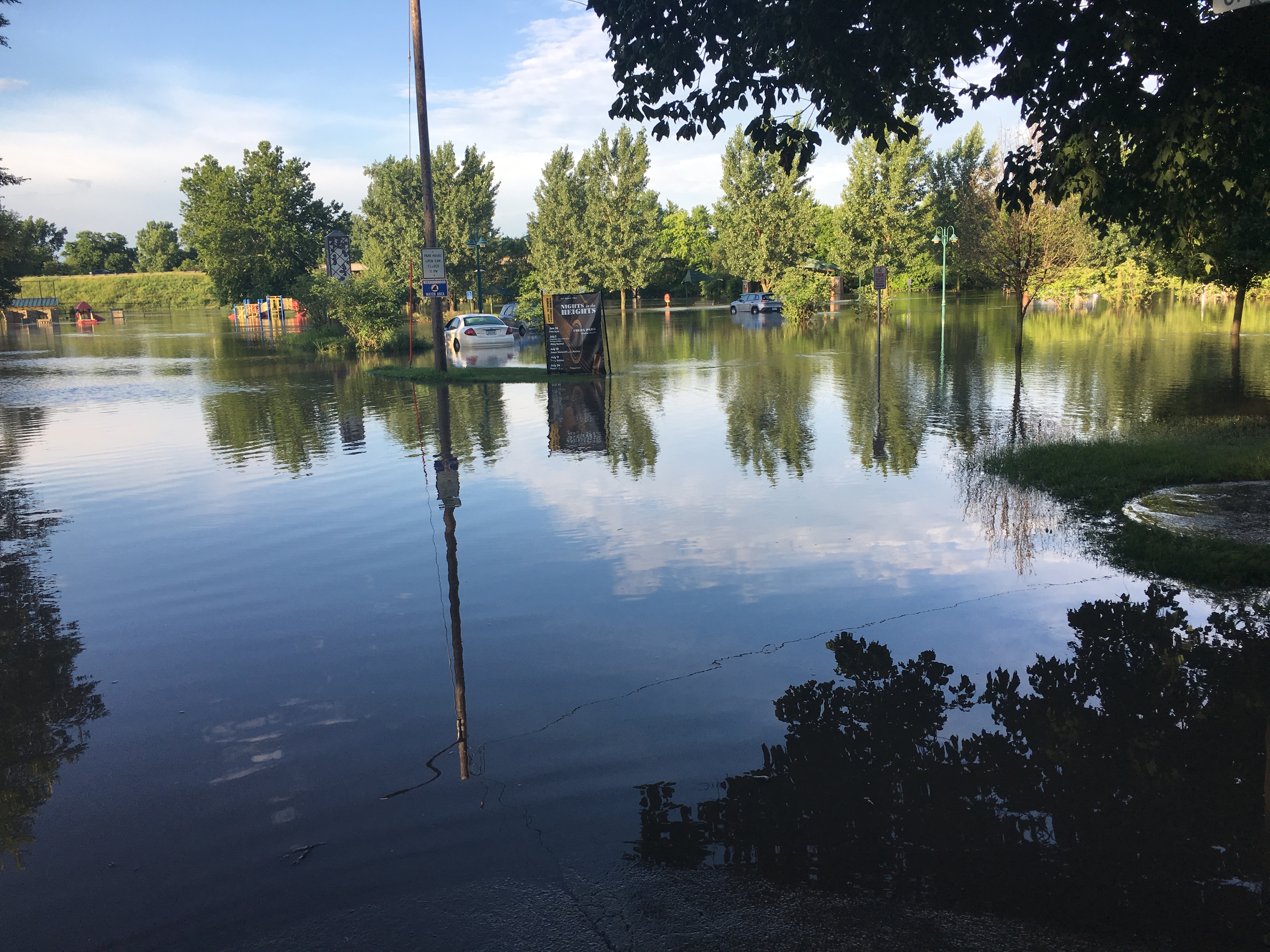
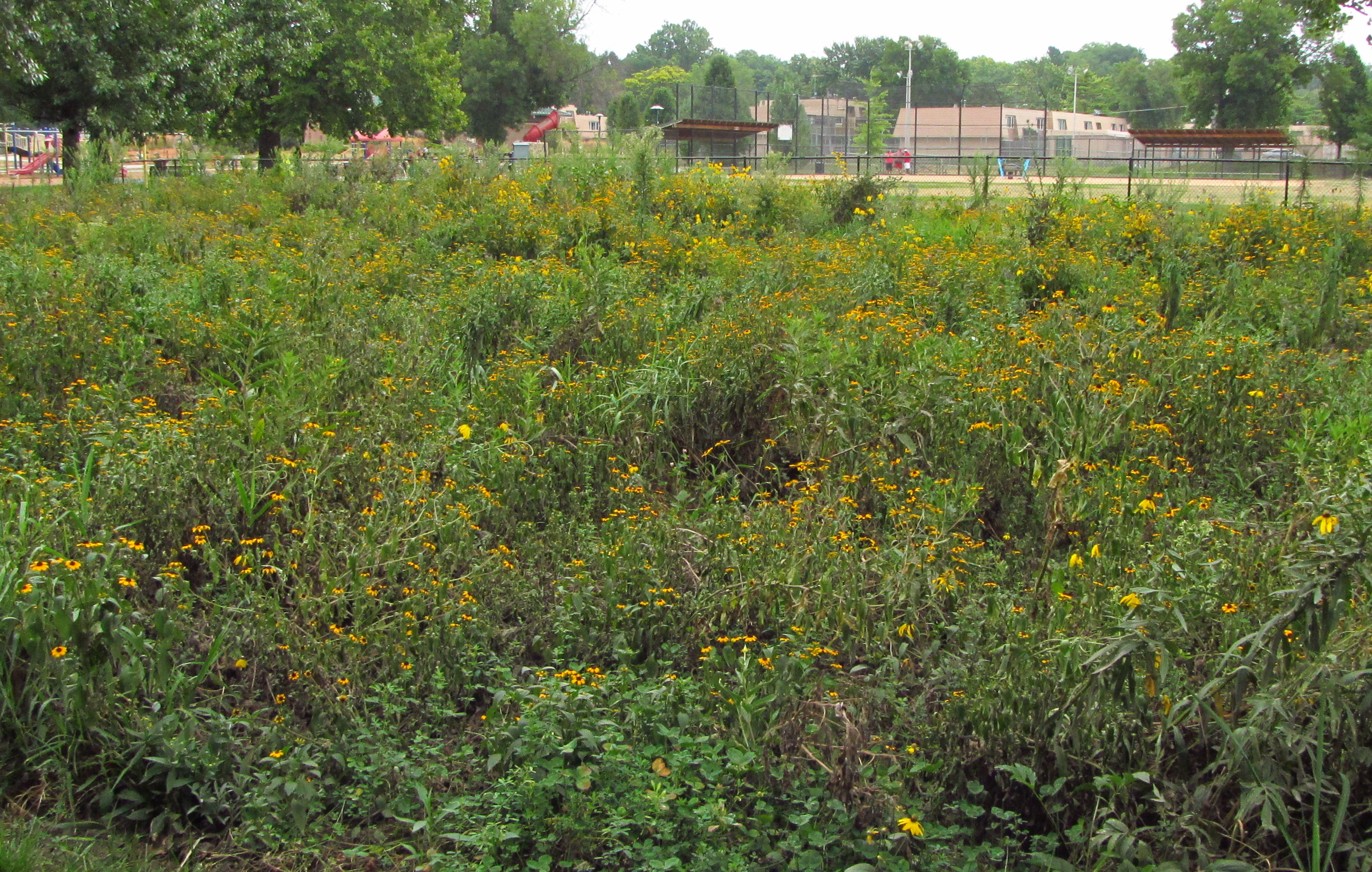
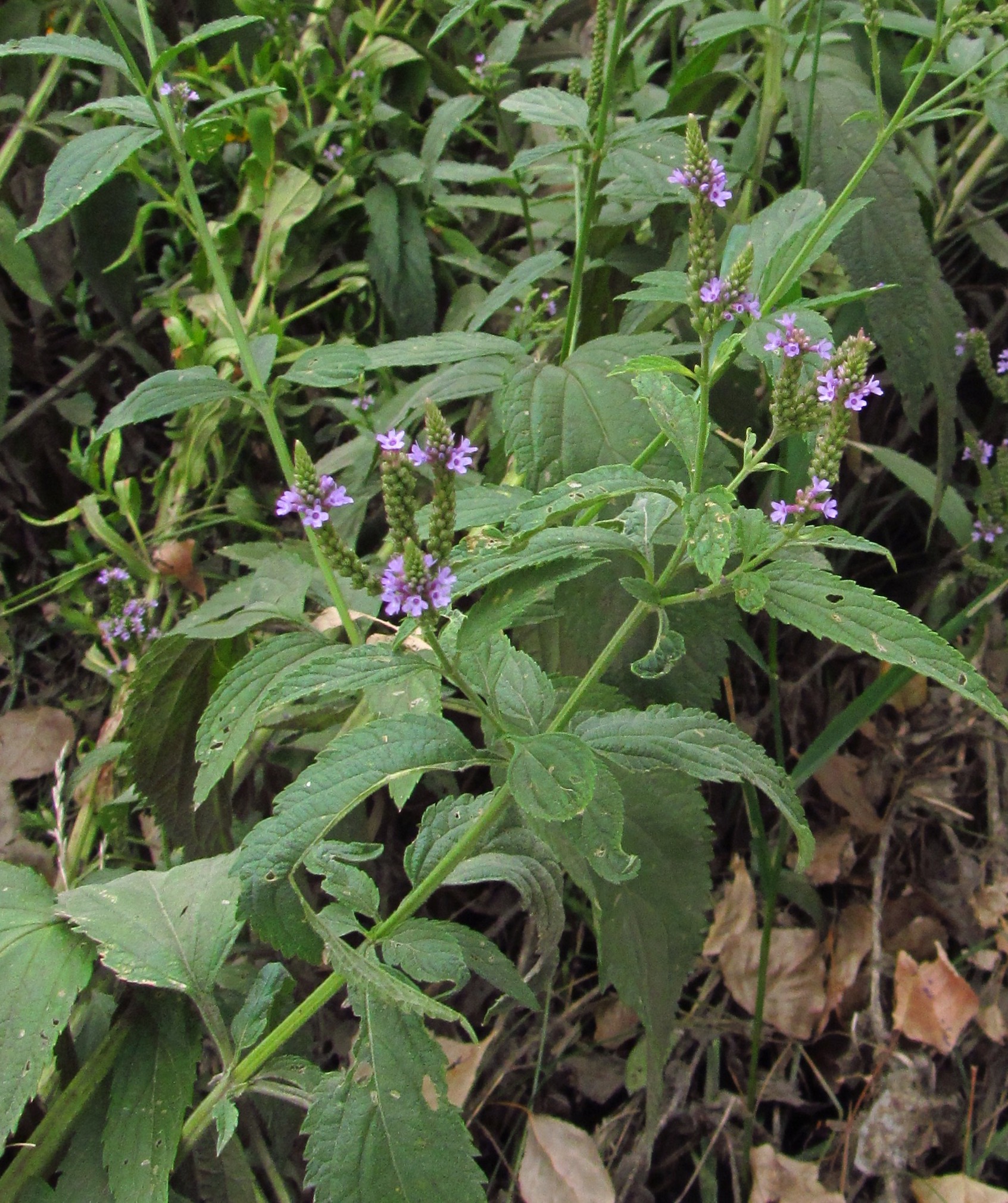
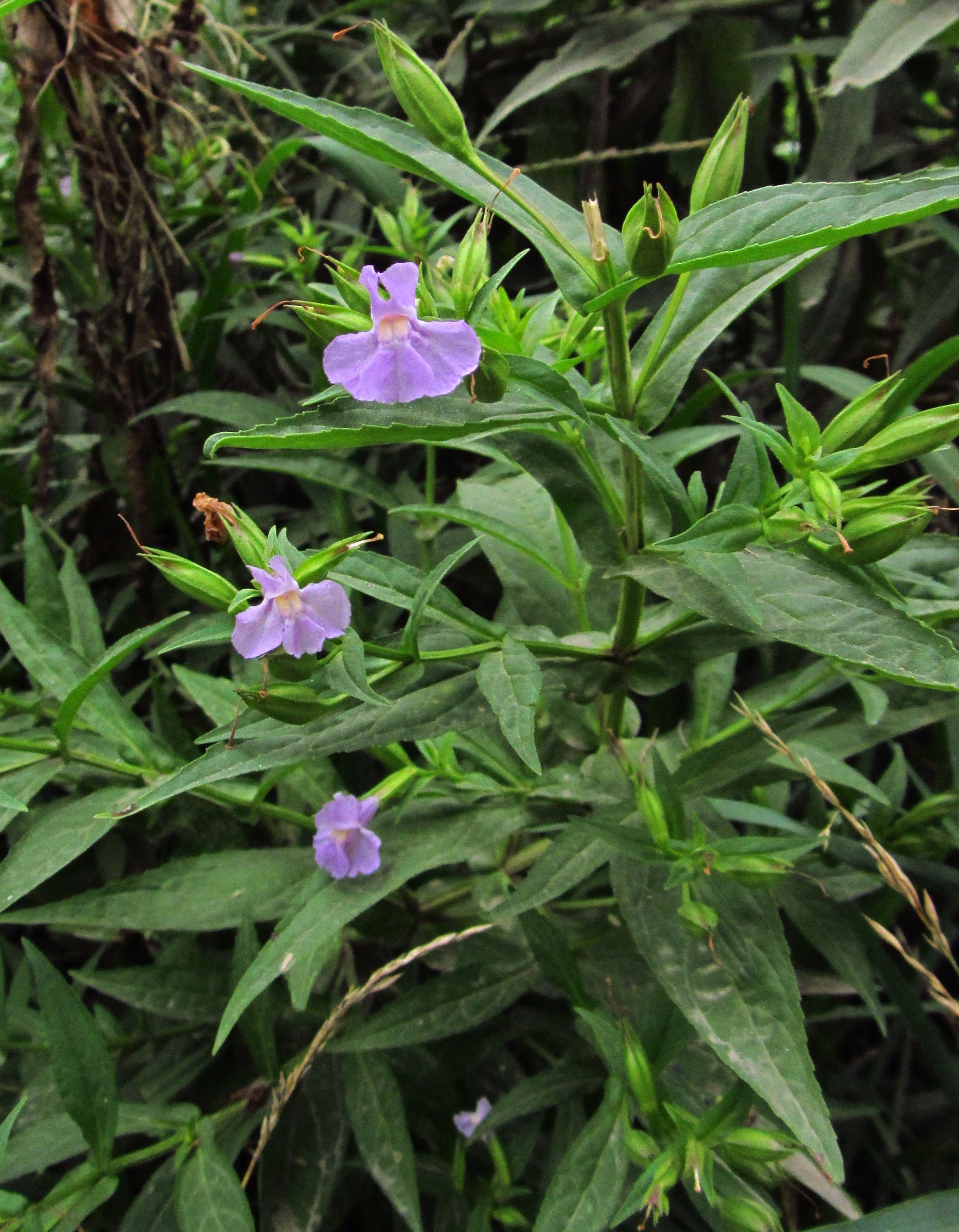
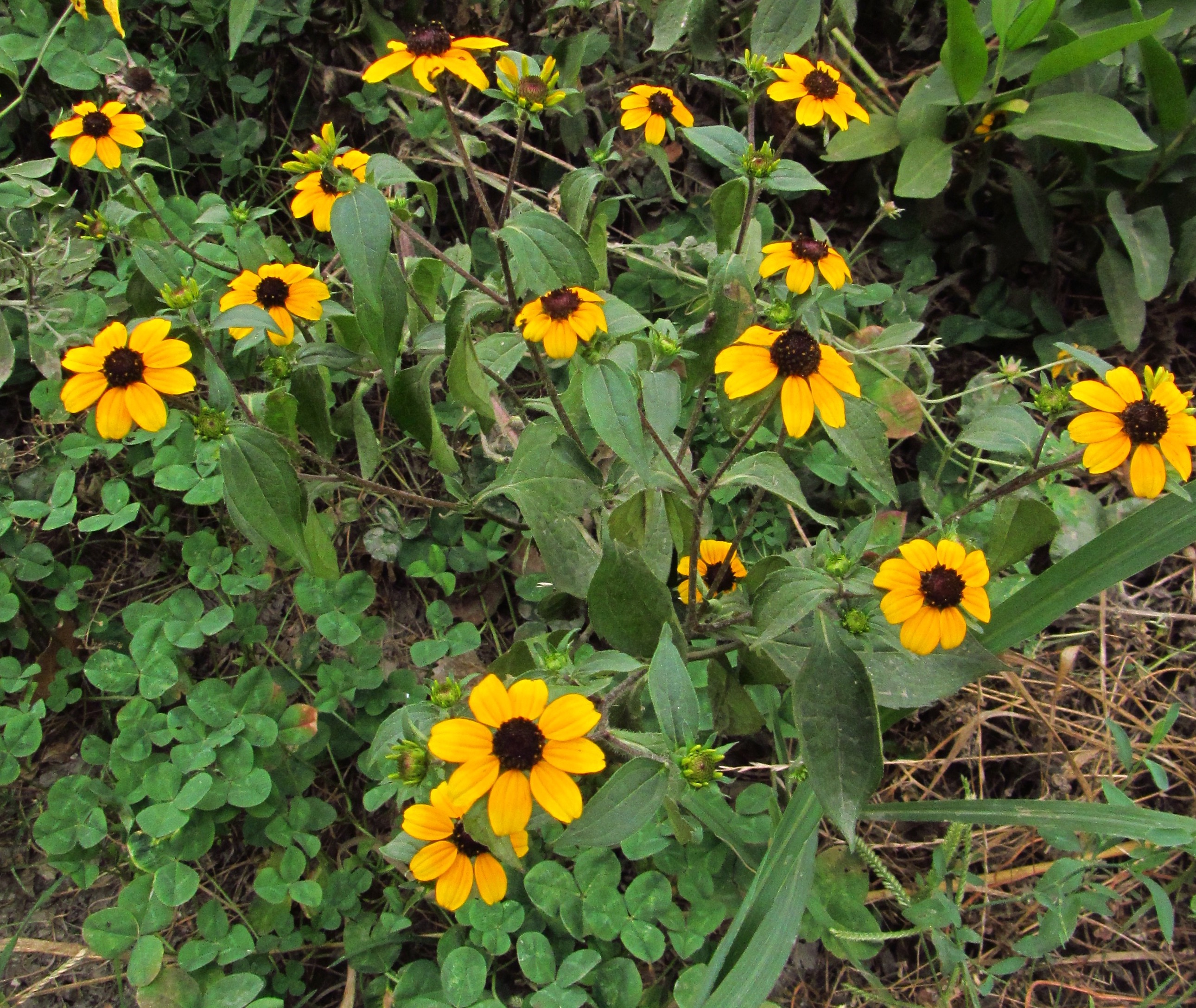
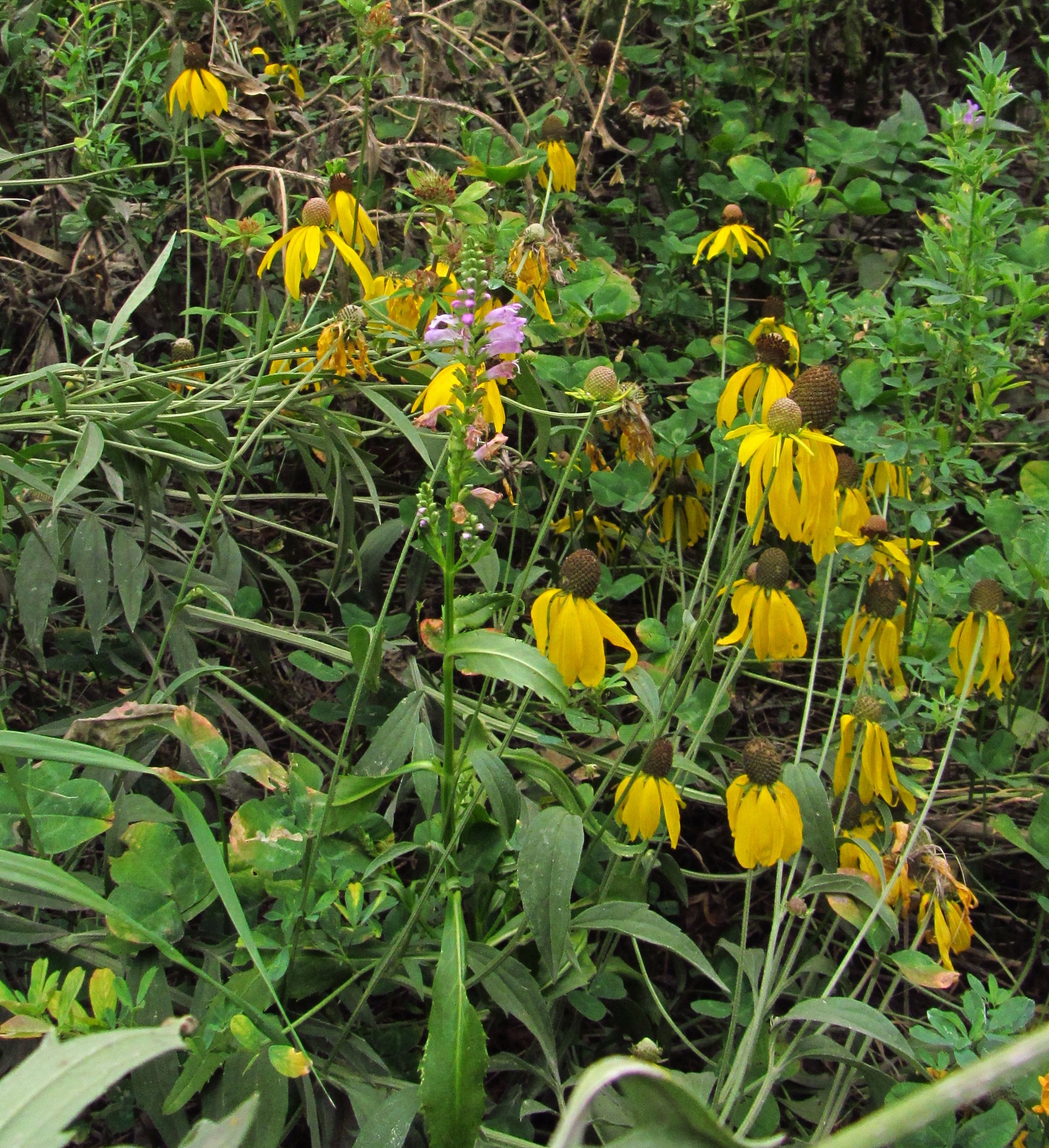
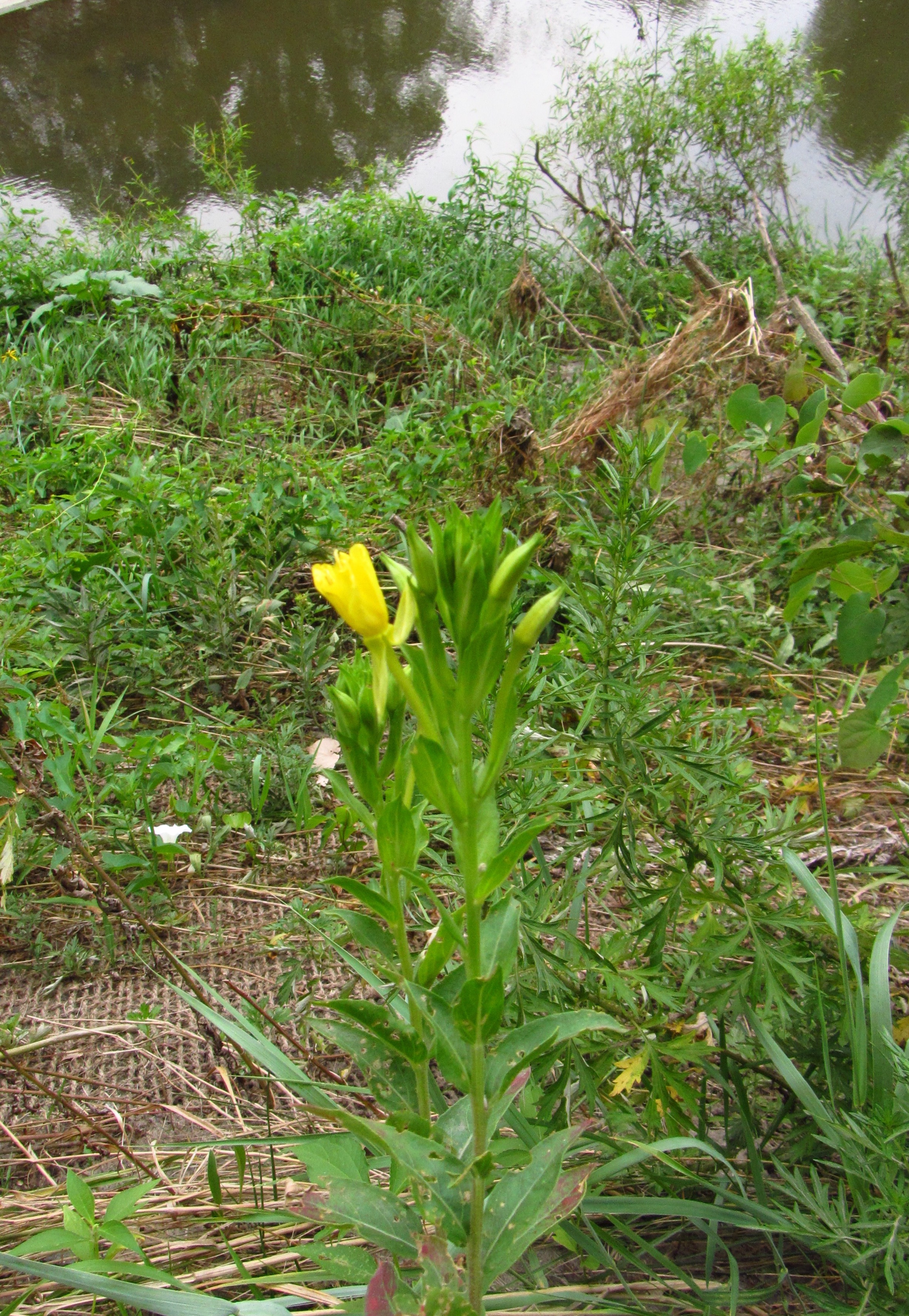
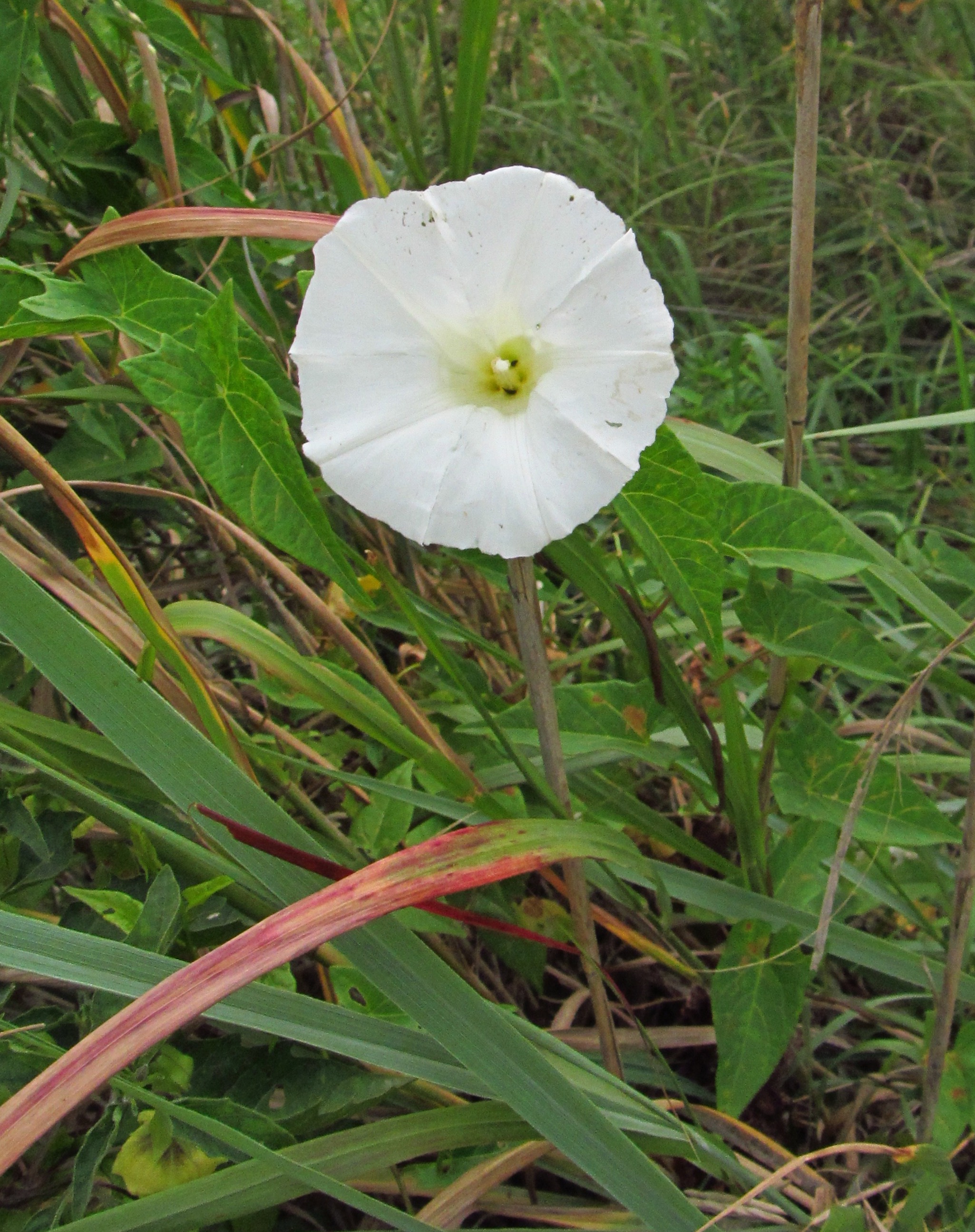
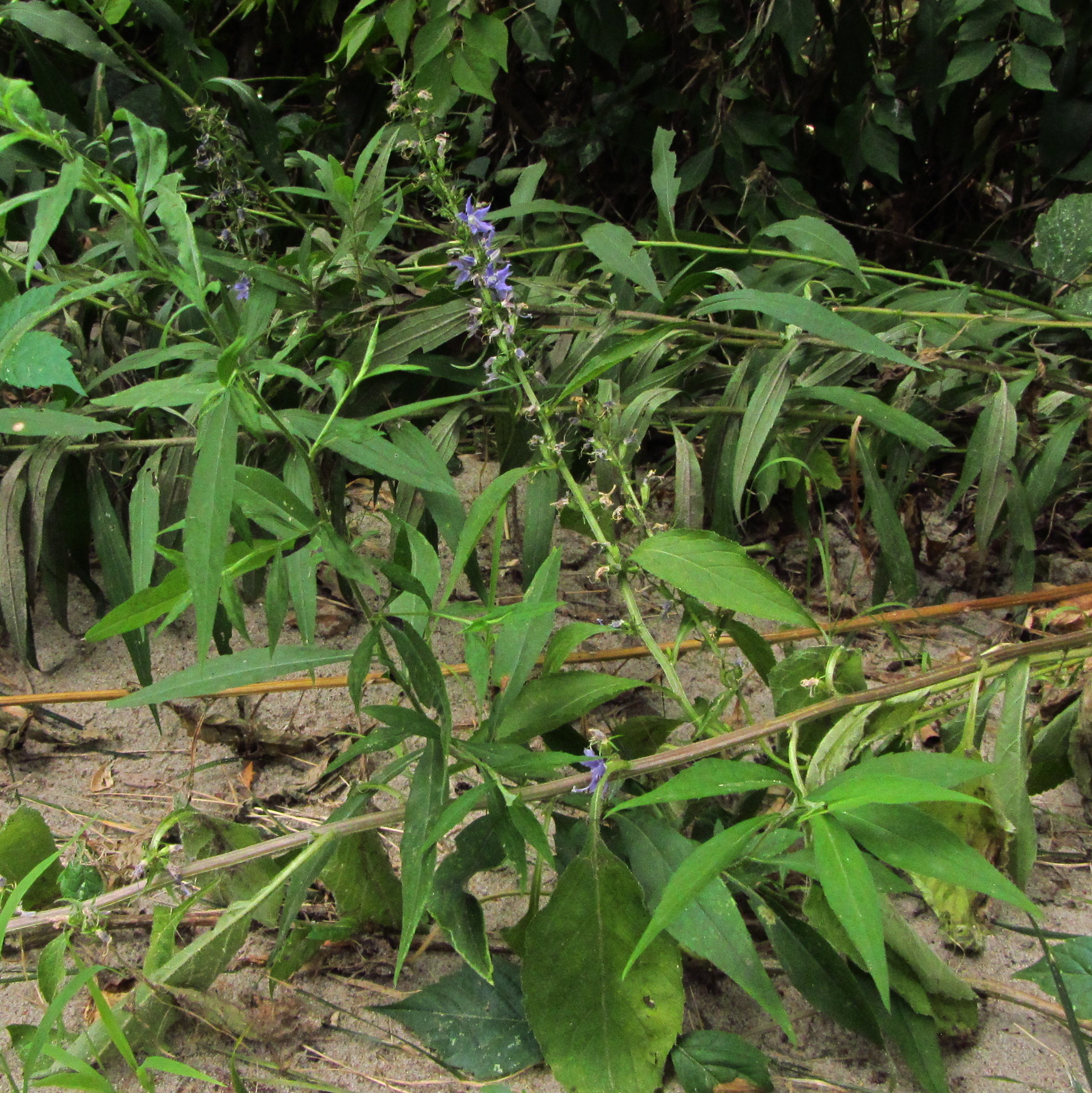
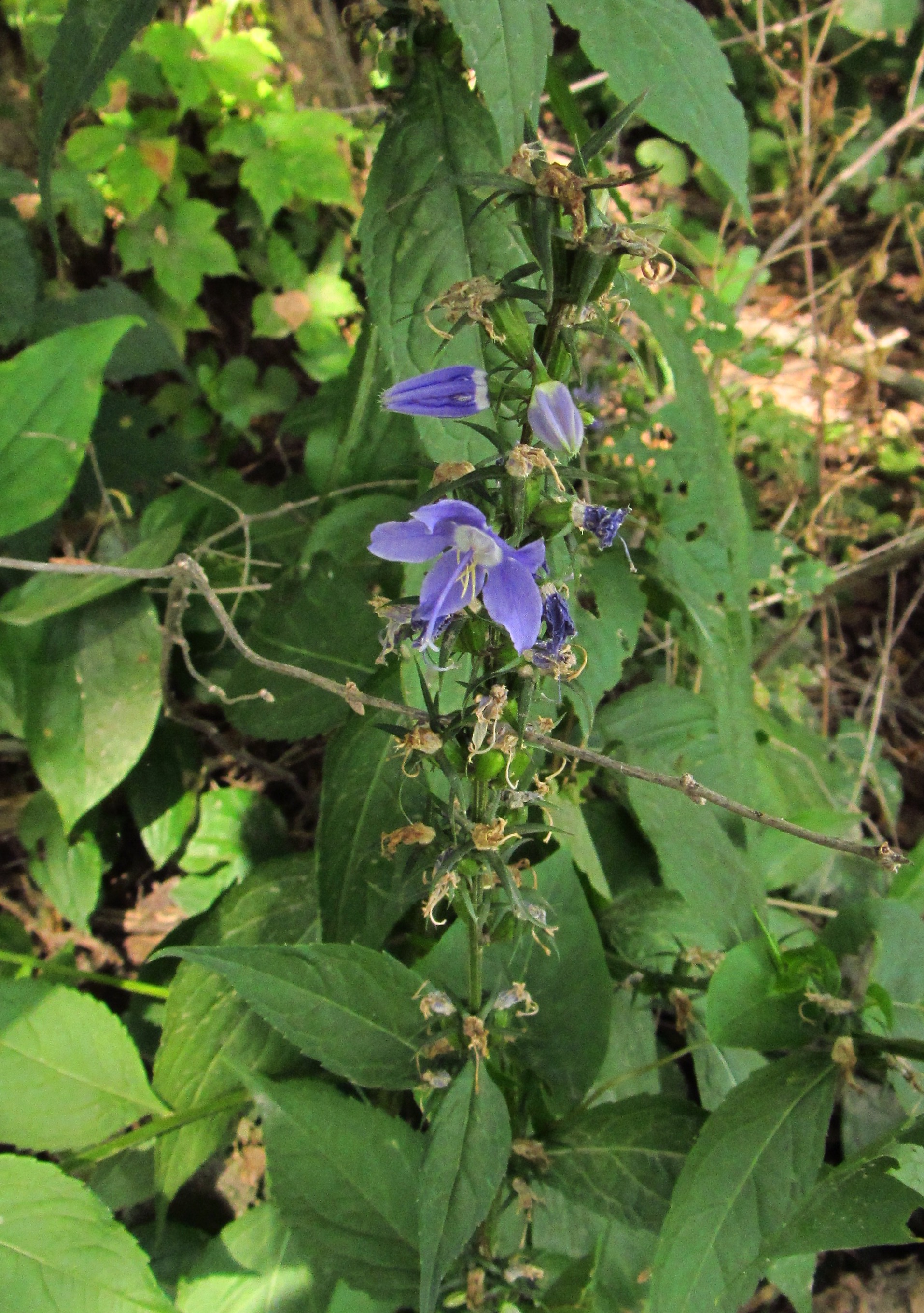
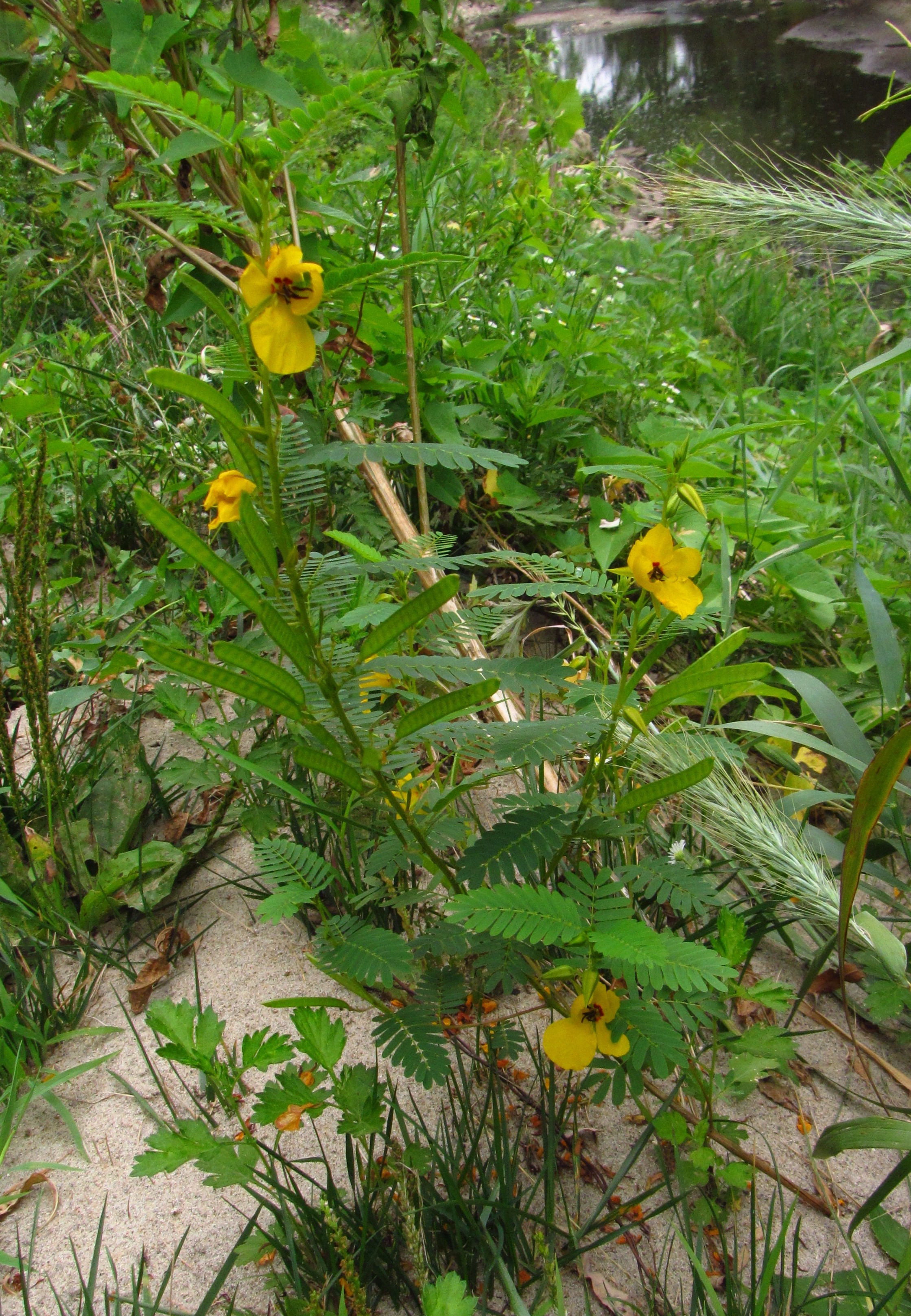
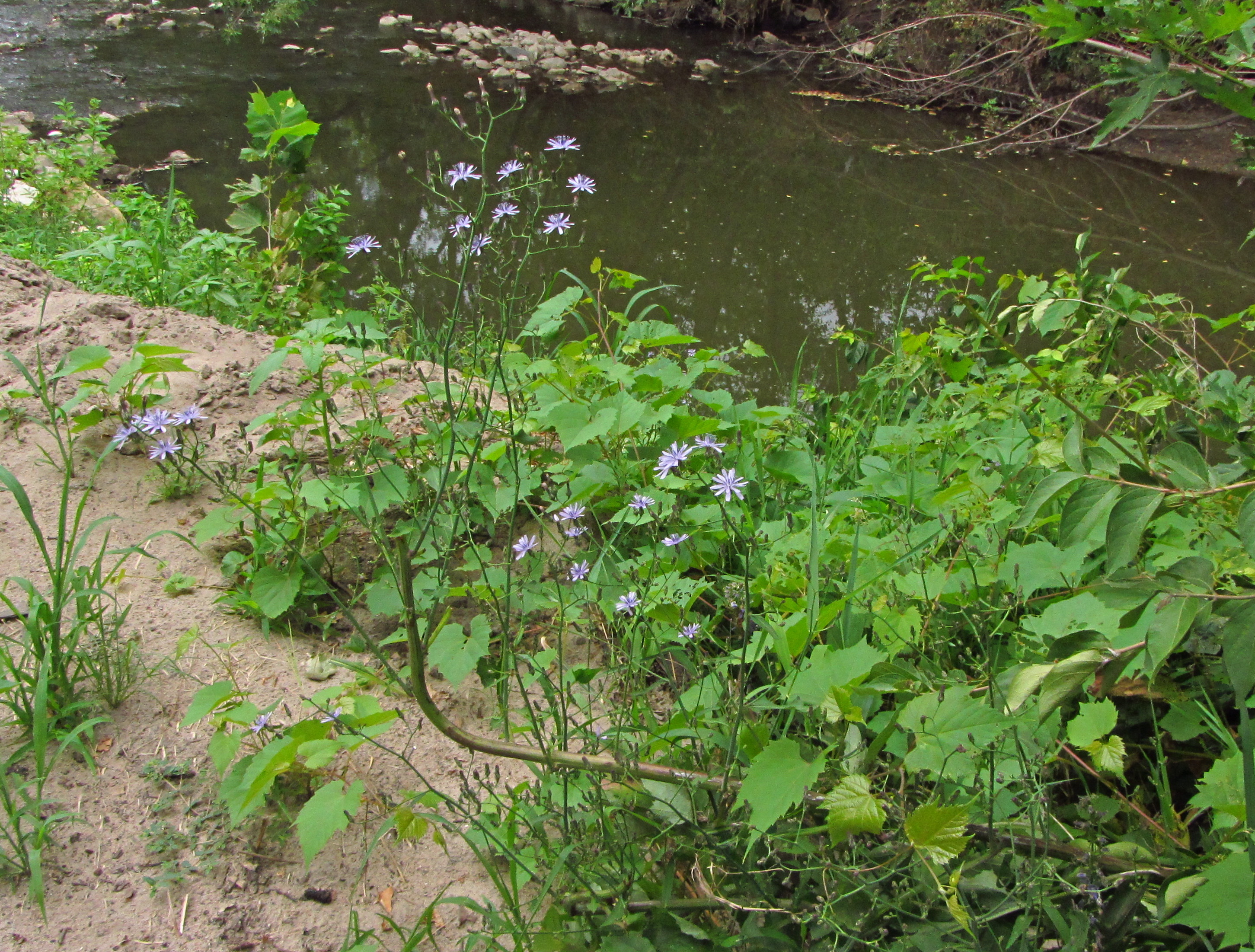
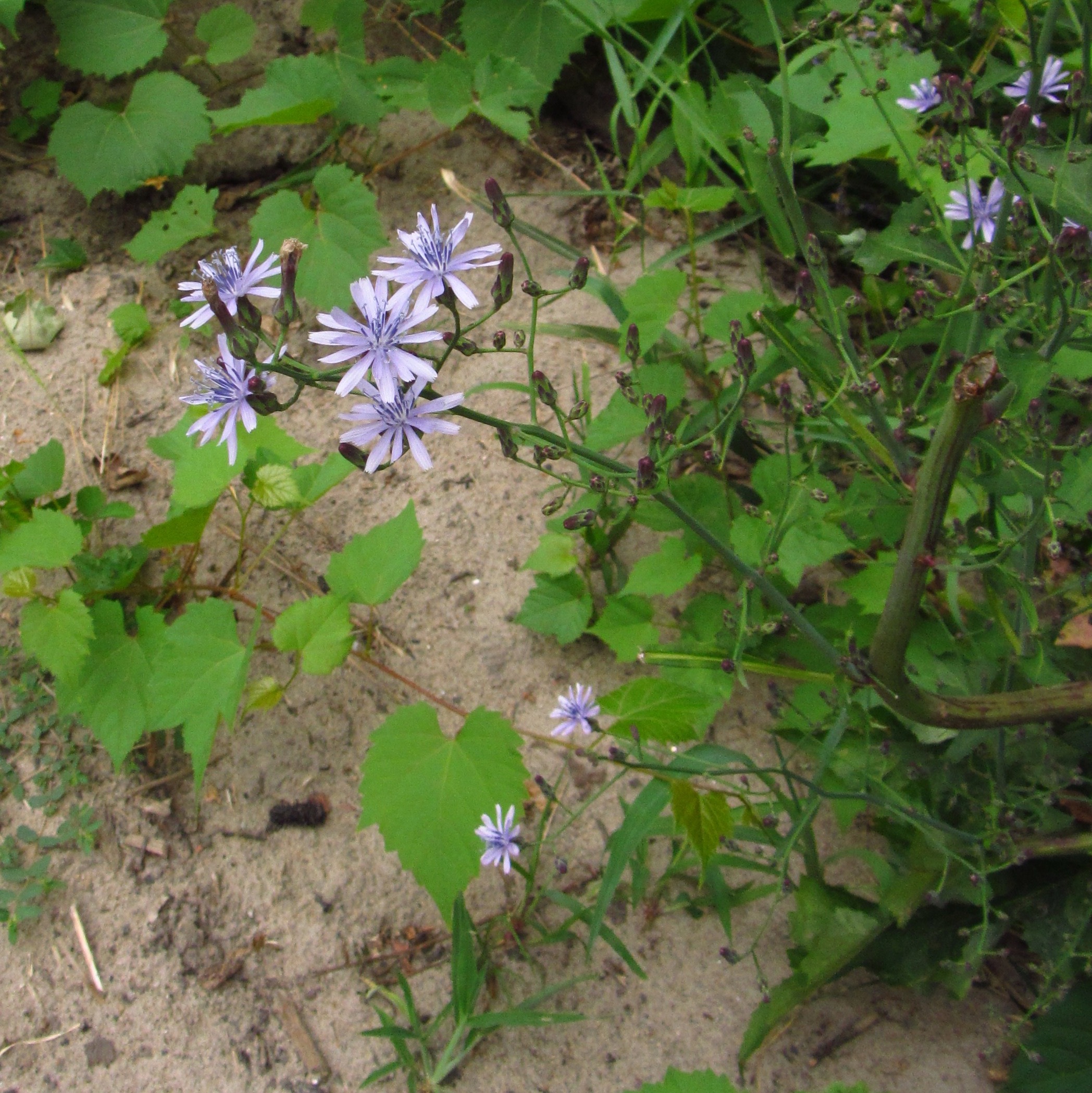
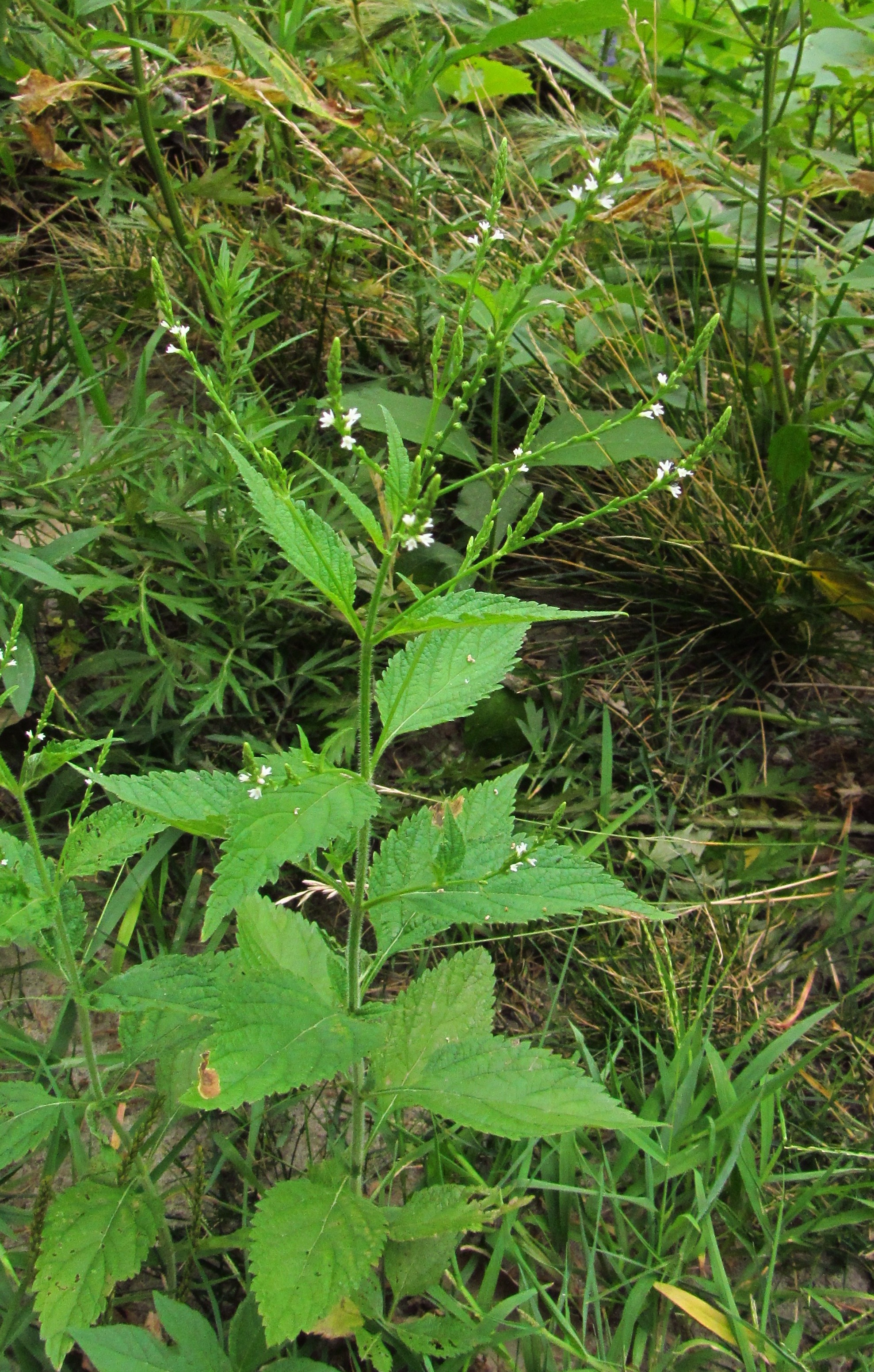
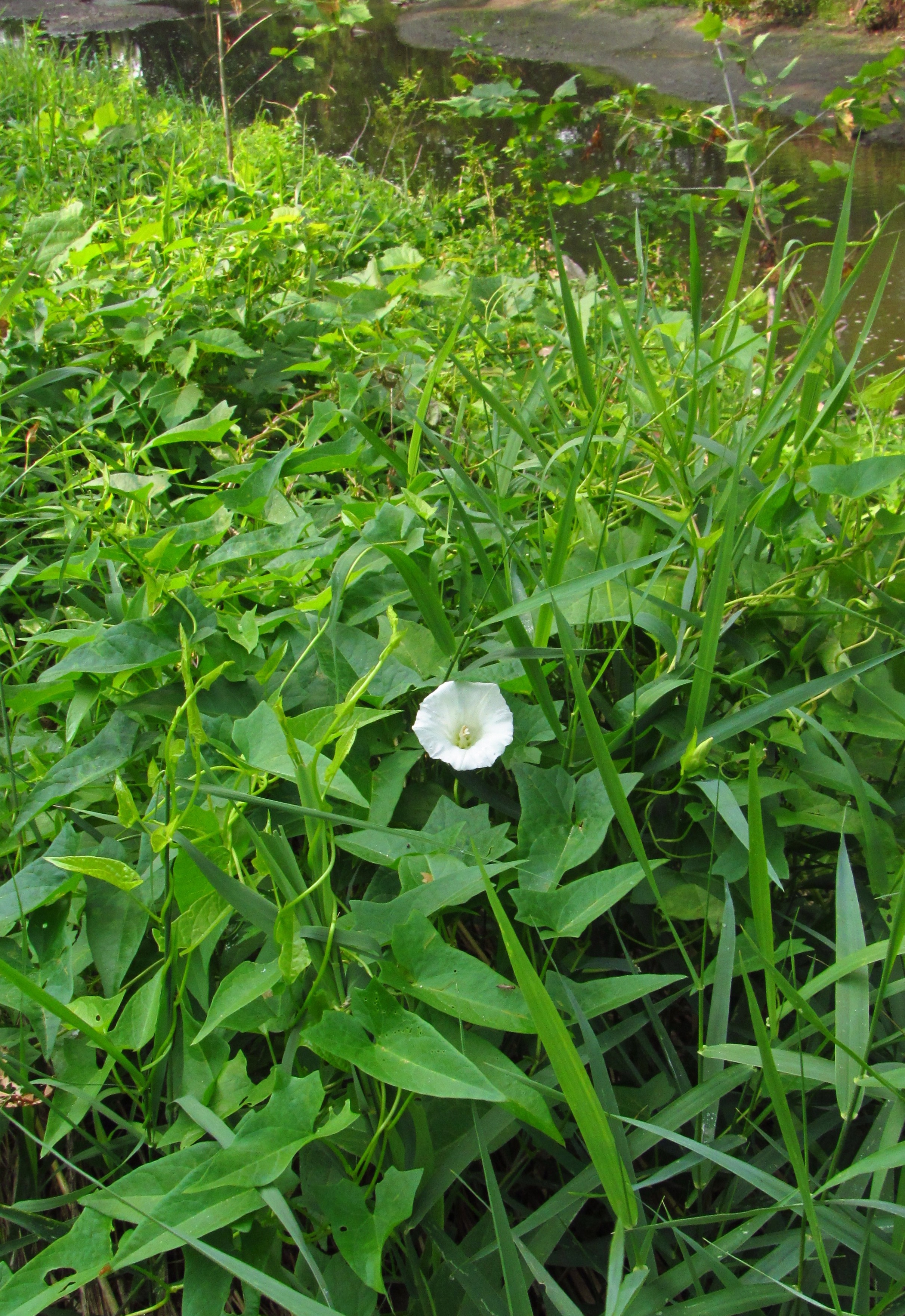
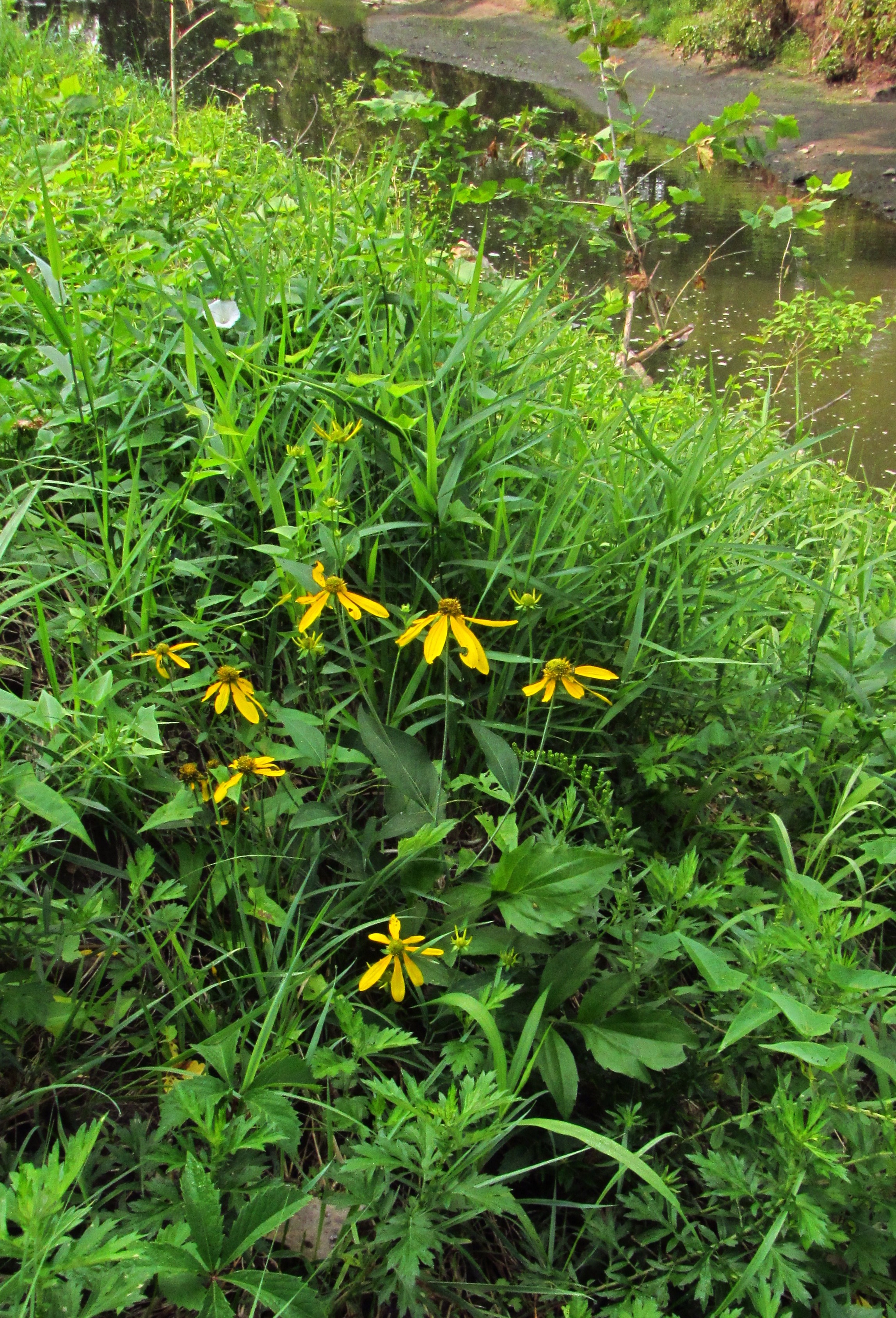
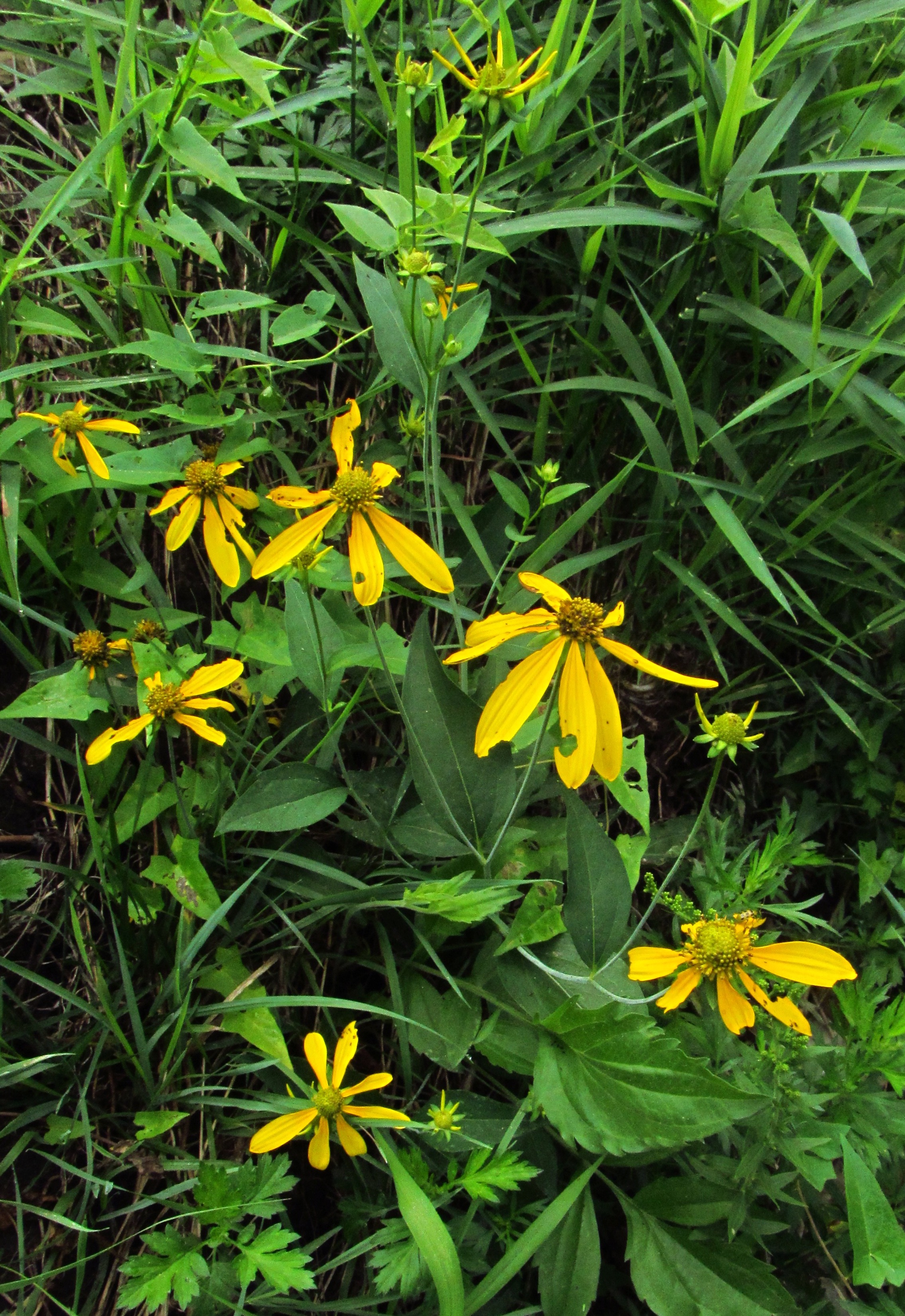
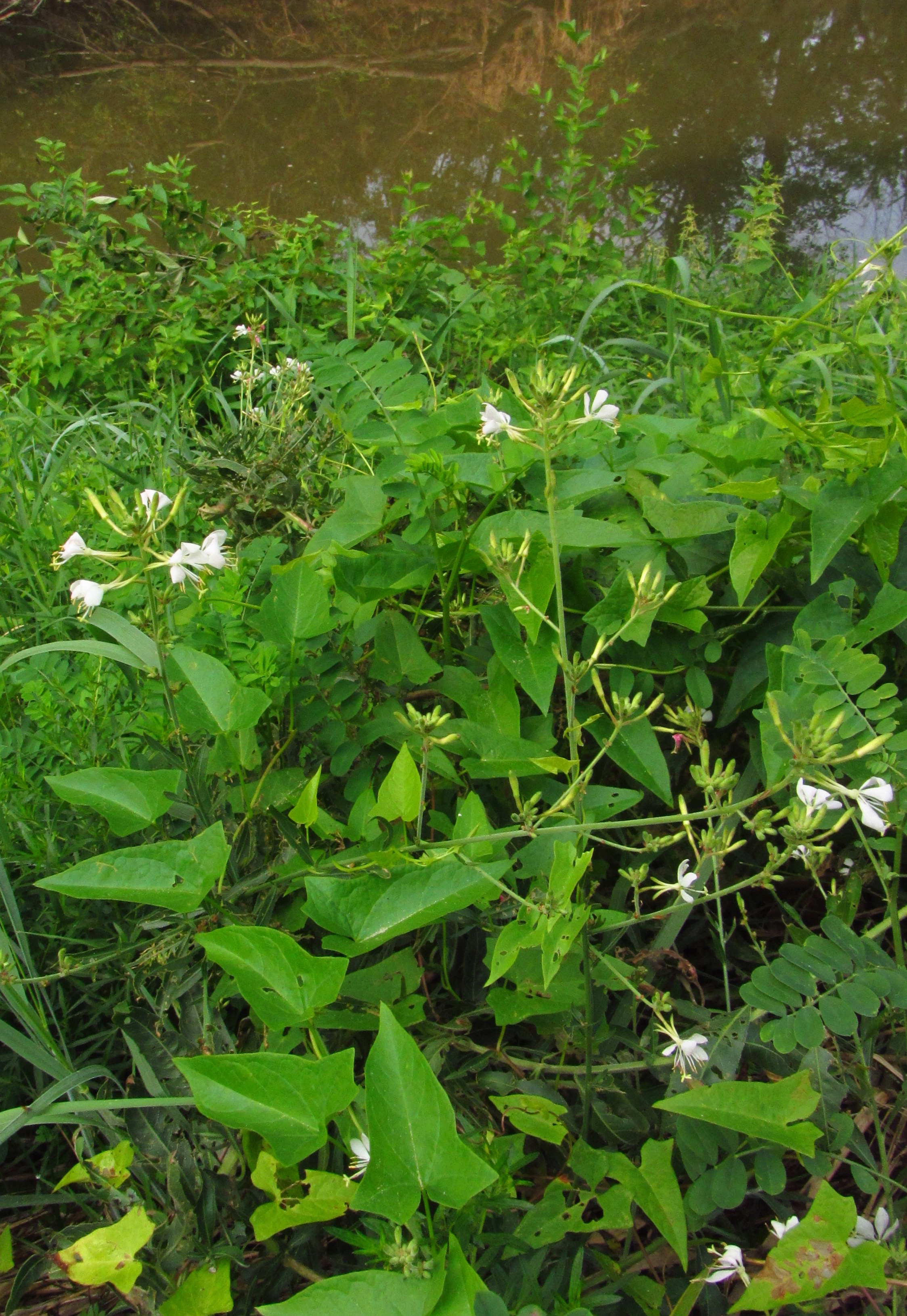
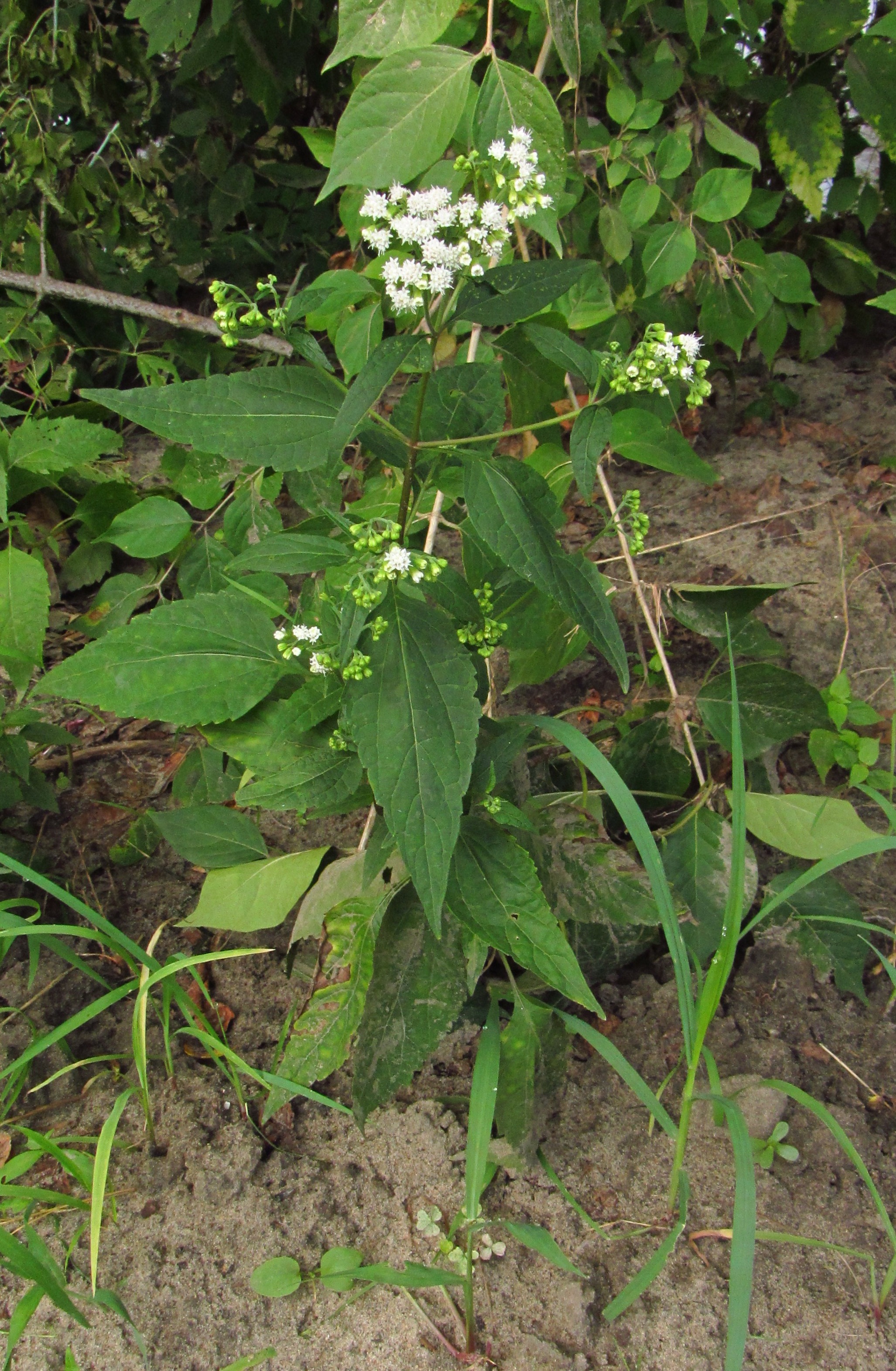
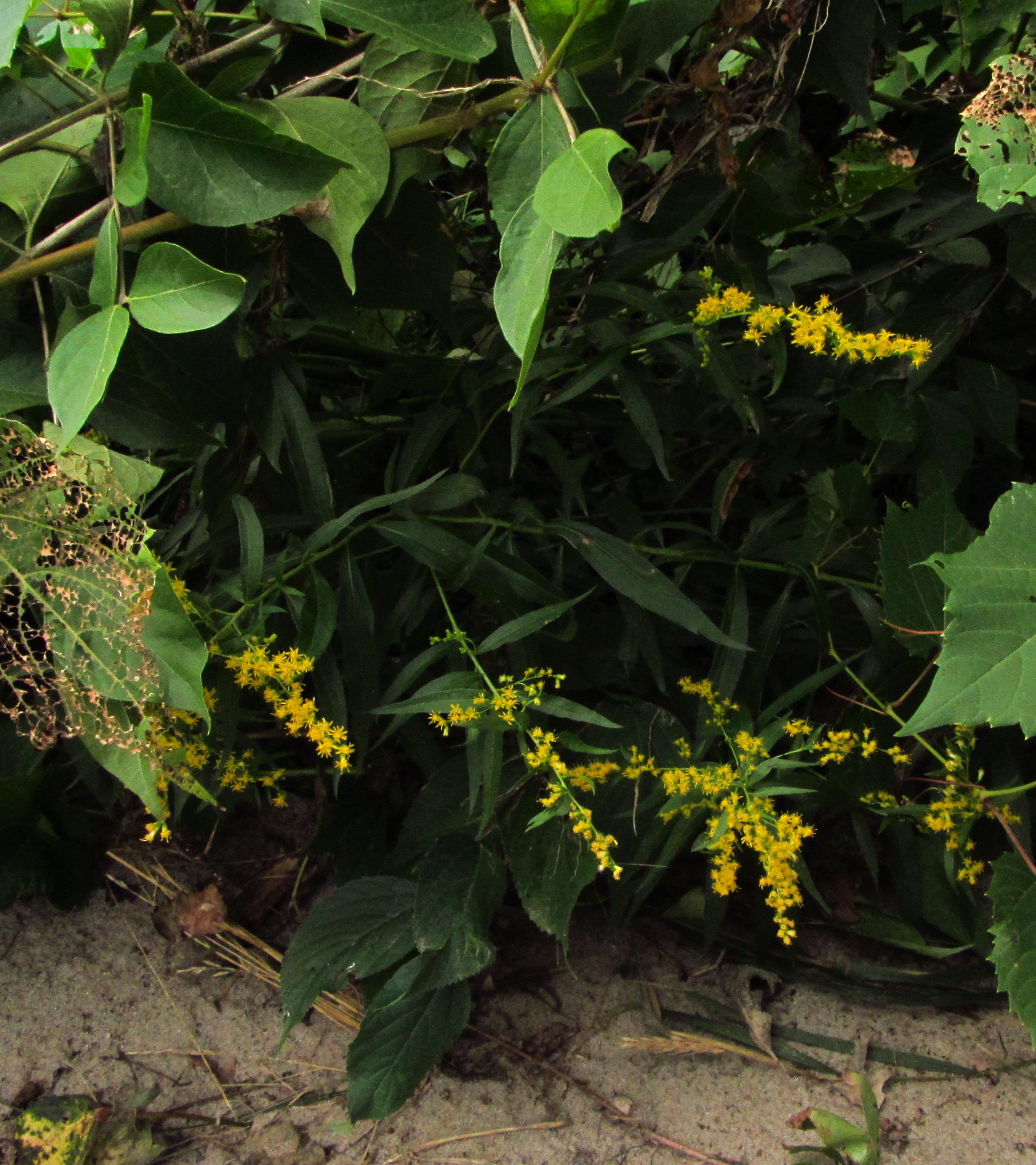
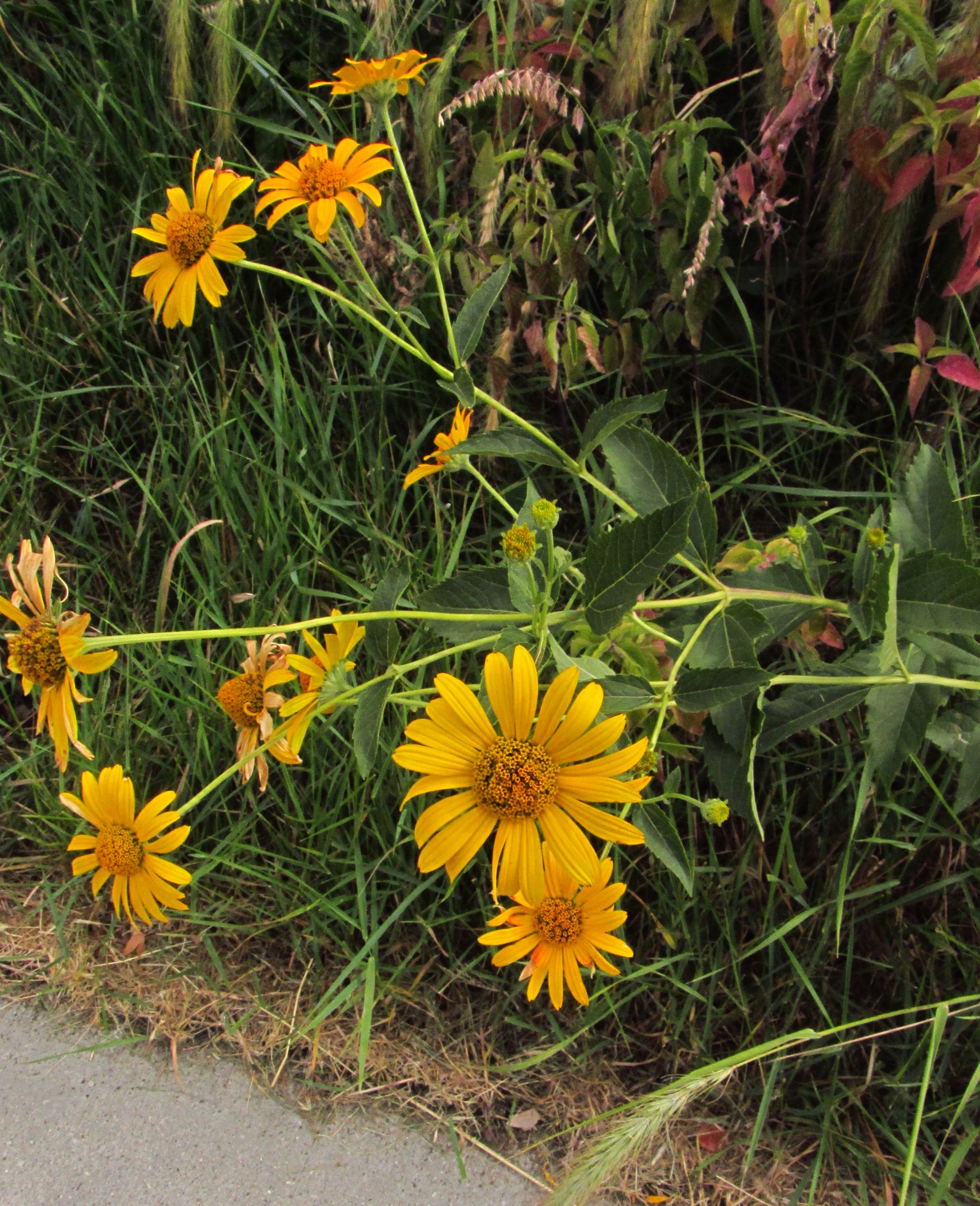
1 Comment
What a good idea for a photo series...
..and what a great illustration of how native plants can bounce back from flooding. Back during the floods of 1993, I had a diverse prairie planting that was a few years old, and it survived the heavy rains just fine, though the wet-adapted species grew better that year. Several years later during a drought, the dry-adapted species grew better.
PrairieFan Sat 6 Oct 12:36 AM